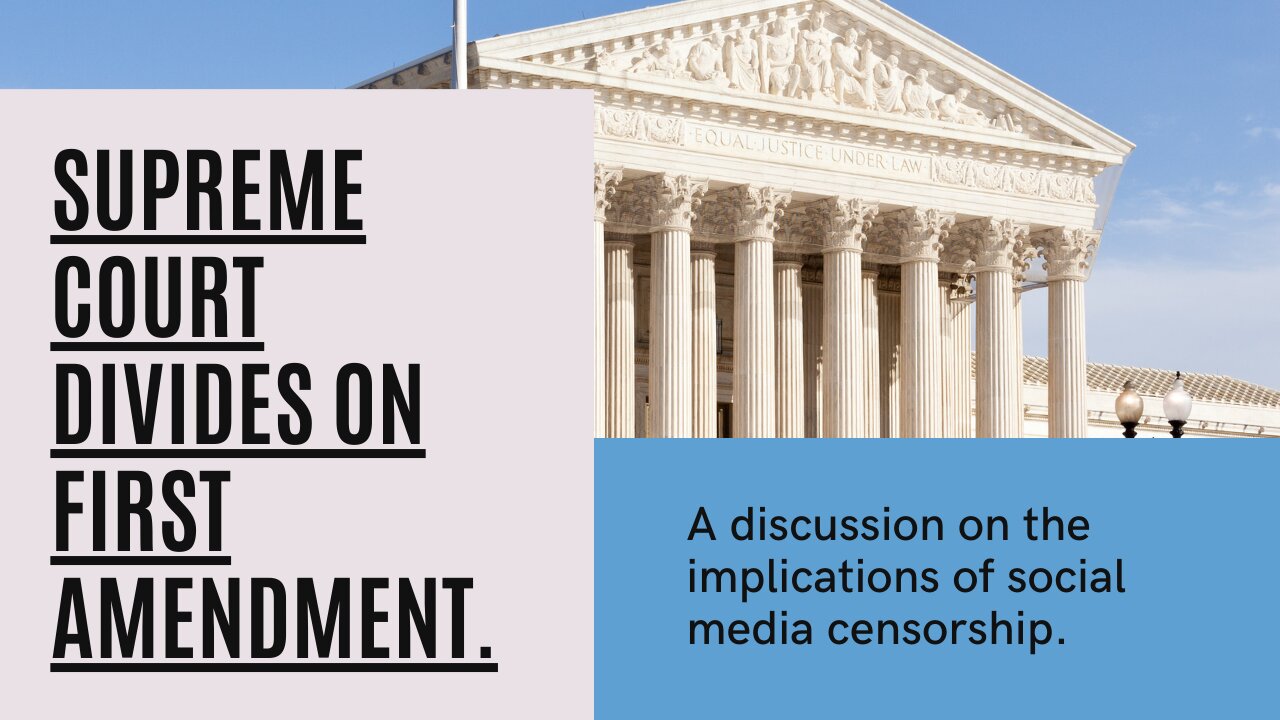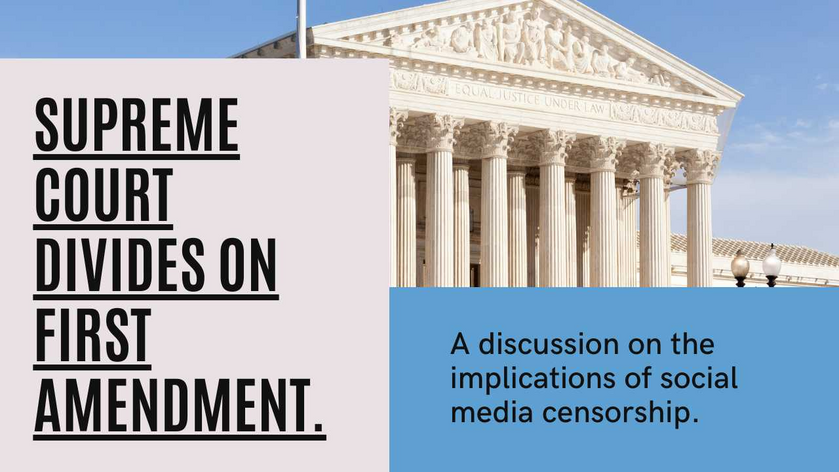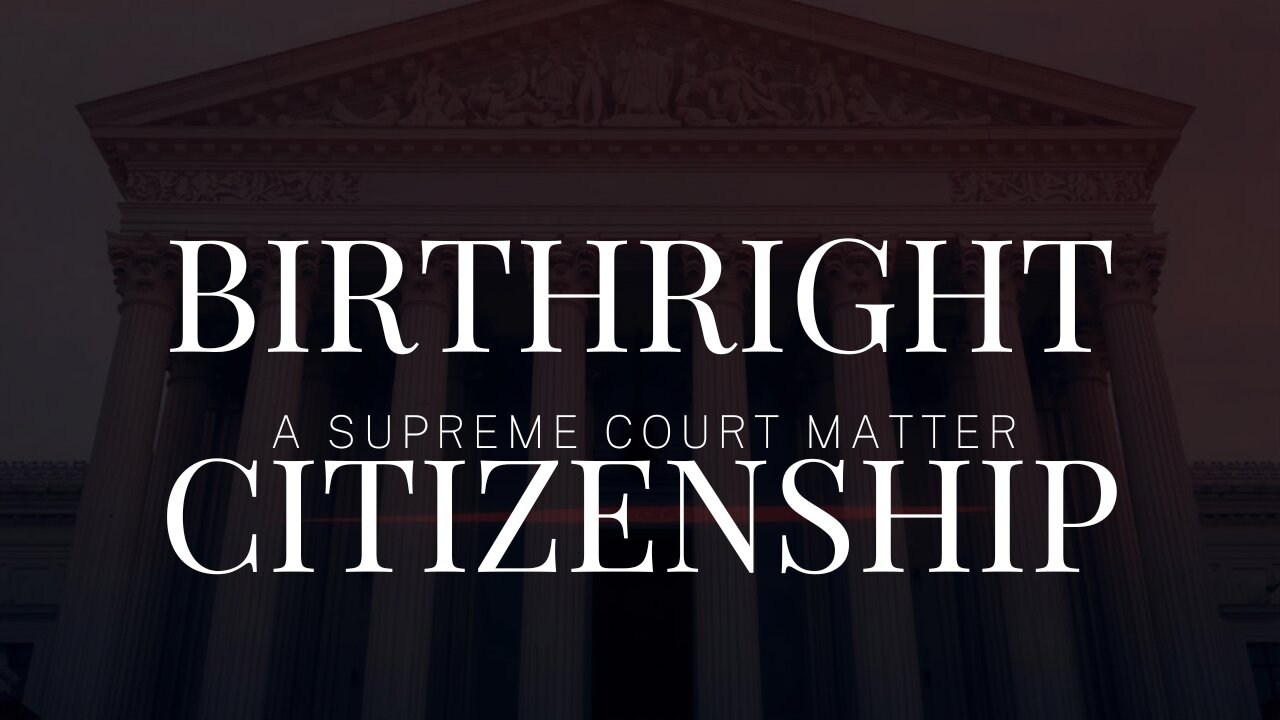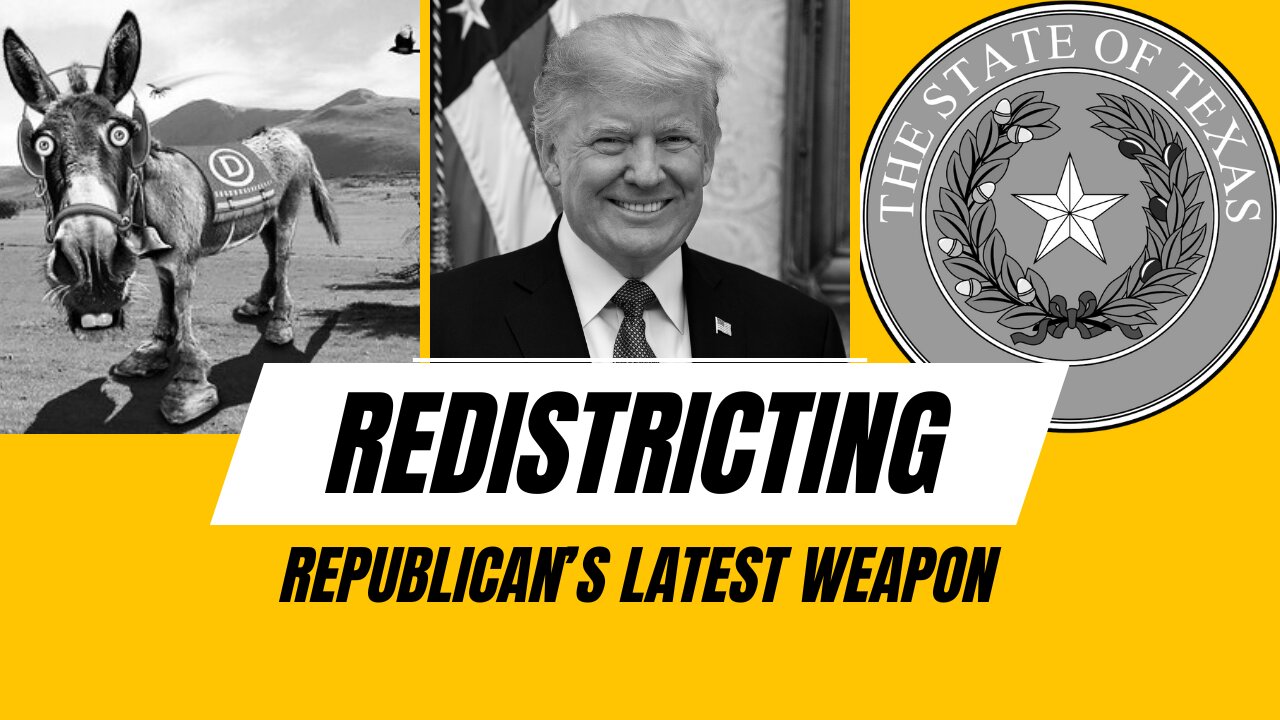Yesterday the case of Murthy v. Missouri (once Missouri v. Biden) came to oral argument before the U.S. Supreme Court. And as they have on the Second Amendment, so the Court divided on the First. Exactly where that division will happen, the country must wait through June to see. But the advocate for the First Amendment was probably not the best advocate among the many lawyers for the plaintiffs. Furthermore, this advocate conceded a few things an advocate for a private plaintiff might not have. Nevertheless, the reasons why the plaintiff-respondents might lose this case, also show the way to a solution to the only real problem they all have. Which is: they are trying to preserve their voices on a de facto social-media cartel. Therefore their solution is to decamp from that cartel and support other platforms that have withstood the worst siege that cartel has thrown at them.
The blocs of the Supreme Court
The Supreme Court showed, in its 2022 Term, that it now divides itself into three blocs.

The Originalist Bloc of Justices Alito, Gorsuch and Thomas stand on the Constitution – in its original language. Furthermore they stand on the original words of the Constitution and its amendments, and what those words originally meant. The Liberal Bloc of Justices Jackson, Kagan and Sotomayor treat the Constitution as “a living document” and the Court as a Court of equity. As in, “Diversity, Equity, and Inclusion.” No wonder – Jackson, Kagan and Sotomayor appear to represent, respectively, the Black, Alphabet Soup, and Latinx (rhymes with Kleenex®) constituencies.

The Moderate Bloc sometimes “splits the baby,” as they have in two recent border-critical cases out of Texas. This Bloc includes Chief Justice Roberts and Justices Barrett and Kavanaugh. They tend not to want to upset precedent, unless someone – probably either Alito or Thomas, two of the best legal minds now on the Supreme Court – can persuade them. As Sam Alito did in Dobbs v. Jackson Women’s, for example. Recently, Justices Barrett and Sotomayor, in an interview with PBS NewsHour, discussed the rather painstaking code of etiquette at the Supreme Court that is the most likely reason Justices Alito and Thomas have an opportunity to persuade their colleagues of anything.
Preconditions for the oral argument
Herewith the docket pages for this case from CourtListener (District and Appellate Courts) and the Supreme Court itself.
https://twitter.com/dbenner83/status/1769787318376821150
The Supreme Court docket shows that someone – probably one of the Missouri plaintiffs – tried to move for divided argument and for an extension of time. Divided argument would have let a State Solicitor General (from Missouri or Louisiana) make one argument, and an attorney for one of the five individual plaintiffs (Jayanta Bhattacharya, M.D. Aaron Kheriaty, M.D., Martin Kulldorf, M.D., and journalists Jim Hoft and Jill Hines) make another.

https://twitter.com/gatewaypundit/status/1769779193896657035
Whoever it was, filed too late, and the Court denied the motion – probably because the Court had already scheduled another Big Case for the same day. (National Rifle Association v. Vullo, Docket No. 22-842.)
So the plaintiffs selected J. Benjamin Aguinaga, Solicitor General of Louisiana, to make their argument. That would turn out to be a mistake. For one thing, Mr. Aguinaga thought like a government official, and therefore conceded far too much when a certain Justice argued for “compelling interests” and inherent “emergency” powers. A private attorney might not have been so willing to concede that. More to the point, a case like this needed a far more “ornery” attorney to argue it, than a State Solicitor General.
Brian H. Fletcher, Chief Deputy Solicitor General of the United States, argued for the government.
Attitudes of the Supreme Court Justices
As should surprise no one, Justice Samuel A. Alito took up the cause of freedom of speech. Recall that he objected initially to staying the injunction when the government applied for it. Justices Neil Gorsuch and Clarence Thomas joined Justice Alito in that dissent. So perhaps they are more likely to vote to affirm the Fifth Circuit’s admittedly watered-down injunction.
At the oral argument, Alito made no secret of his disdain for – indeed horror of – the government’s position.
https://twitter.com/charliekirk11/status/1769817813341143488
Mr. Fletcher, when I read all of the emails exchanged between the White House and other federal officials on Facebook in particular but also some of the other platforms, and I see that the White House and federal officials are repeatedly saying that Facebook and the federal government should be partners, we're on the same team, officials are demanding answers, I want an answer, I want it right away. [And] when they're unhappy, they curse them out. There are regular meetings. There is constant pestering of Facebook and some of the other platforms and they want to have regular meetings, and they suggest rules that should be applied and why don’t you tell us everything that you're going to do so we can help you and we can look it over.
And I thought: Wow, I cannot imagine federal officials taking that approach to the print media, our representatives over there. If you did that to them, what do you think the reaction would be?
And so I thought: You know, the only reason why this is taking place is because the federal government has got Section 230 and antitrust in its pocket and it's – to mix my metaphors, and it's got these big clubs available to it, and so it's treating Facebook and these other platforms like they're subordinates.
Would you do that to The New York Times or The Wall Street Journal or the Associated Press or any other big newspaper or wire service?
Mr. Fletcher pleaded what the government had then persuaded everyone was a public-health emergency. He cited coronavirus, and a vaccine the government insisted was safe and effective. In fact it is dangerous and countereffective. Too bad no one never inserted that danger or that countereffectiveness into the lower-court record. In any case, Mr. Fletcher’s argument did not impress Justice Alito. Good intentions did not alter the air of command the government assumed when talking to those Trust and Safety Teams.
Justice Ketanji Brown Jackson has emerged as the most strenuous advocate for the government. Toward the end of the session, she made this incredible statement:
So my biggest concern is that your view has the First Amendment hamstringing the government in significant ways in the most important time periods. I mean, what would you have the government do? I've heard you say a couple times that the government can post its own speech, but in my hypothetical, you know, kids, this is not safe, don't do it, is not going to get it done. And so I guess some might say that the government actually has a duty to take steps to protect the citizens of this country, and you seem to be suggesting that that duty cannot manifest itself in the government encouraging or even pressuring platforms to take down harmful information. So can you help me? Because I'm really -- I'm really worried about that because you've got the First Amendment operating in an environment of threatening circumstances from the government's perspective, and you're saying that the government can't interact with the source of those problems.
Further on:
The line is does the government, pursuant to the First Amendment, have a compelling interest in doing things that result in restricting the speech in this way? That test, I think, takes into account all of these different circumstances, that we don't really care as much about how much the government is compelling or maybe we do but in the context of tailoring and not as sort of a freestanding inquiry that's overlaid on all of this. Does that make sense?
https://twitter.com/EndWokeness/status/1769780554772136090
https://twitter.com/SystemUpdate_/status/1769741427271966976
https://twitter.com/SystemUpdate_/status/1769753959315427812
The “hypothetical” here is a fictitious Internet “challenge,” daring teenagers to jump from ever-higher windows. In fact that mirrors any of a number of “death dares” on TikTok. The solution has always been to tell the “kids” not to do it, and alert the parents.
More on death dares
In any event, when a Justice of the Supreme Court actually says,
You know, “Kids, this is not safe, don’t do it,” is not going to get it done.
Then what does she think will “get it done”? Get what done? Since when does the government have a responsibility to protect people, even adolescents, from themselves? If an adolescent wants to enter the Darwin Awards competition by eating a “Tide pod,” to quote one particular TikTok “death dare,” then no law-enforcement agency can possibly be negligent. (In fact, Procter and Gamble, makers of Tide laundry detergent, did post a public-service announcement denouncing the Tide Pod Challenge.)
As repugnant as this is, and bearing in mind the “instinct” that Solicitor Aguinara said he “understood,” the death dare is protected speech. But Ketanji Brown Jackson doesn’t understand that. In fact she spoke repeatedly of “compelling interests” to restrict speech – something none of her colleagues broached.
(Definition: Darwin Awards – an informal competition, decided posthumously in all cases, to honor – or rather, remember – those who made the greatest improvements to the human gene pool by removing themselves from it.)
But in criticizing Justice Jackson for not even remembering that such “death dares” as she invented actually exist, one must also criticize Solicitor Aguinaga for failing to mention that fact when Justice Jackson threw it at him. Instead of merely saying, “Your Honor, I understand the instinct,” does not one say:
Your Honor, with all due respect, I submit, for the record, that such death dares as you describe in your hypothetical, already exist, and no one has responded by taking any of them down. And I further maintain that it is never any part of the government’s mission – not in this Republic – to protect people from themselves.
Which brings up another thing: Mr. Aguinara referred repeatedly to “our democracy.” We are not a democracy, but a republic. The difference is more than academic.
Other expressed attitudes
Justice Thomas questioned Mr. Fletcher closely on whether “coercion” could include an apparently mutual agreement on censorship. Fletcher insisted that it would not, but Aguinaga said it would. But oddly, Justice Gorsuch drew from Mr. Fletcher that precise concession – that an inducement could qualify as coercion.
Justice Sonia Sotomayor appeared to question the harm the injunction was now doing to the government. But later she accused Mr. Aguinaga of “confusing” his “legal doctrines” and even of willful distortions of fact.
Several times Mr. Fletcher said, “The platforms say No to the government all the time.” Justice Brett Kavanaugh challenged Mr. Aguinaga on that point. The Louisiana Solicitor said that wouldn’t change the fact of the threat.
Chief Justice Roberts suggested to Mr. Aguinaga that the government was not “monolithic.” The Solicitor seemed to dispute that point.
Justice Amy Coney Barrett challenged Mr. Fletcher on how it would look if Facebook literally turned over all Trust and Safety decisions to the government. That, Fletcher said, would constitute joint action. Later, Justice Barrett asked Mr. Aguinaga whether he would stand on the First Amendment even if someone shared his personal information and called for bodily harm against him. He said, “Yes.” (Actually, that kind of solicitation is an unlawful threat in any jurisdiction.)
Mr. Aguinaga made one key – maybe fatal – concession to Justice Elena Kagan. He conceded that the government could take down speech by “terrorists.” But he did not concede that the injunction would interfere with such takedowns. (It wouldn’t.)
Rebuttal – and analysis
In rebuttal, Mr. Fletcher insisted that none of the parties had any standing, that the government’s communications with Trust and Safety Teams were nothing more than “bully pulpit” pronouncements, and that no coordination of censorship exists or existed.
Those last two statements are lies, and one can show that easily from The Twitter Files. But this shows a glaring weakness in how the Attorneys General of Missouri and Louisiana, and the lawyers for the individual plaintiffs, have run their case. Why didn’t they ever have any Twitter Files material entered into the record? They surely had that opportunity during the hearing Judge Doughty called on the motion for a preliminary injunction.
Perhaps their most serious unforced error was not applying, in time, for divided argument and an extension of time. Furthermore, Solicitor Aguinaga failed to anticipate the outrageousness of Justice Jackson’s questioning. She distinguished herself, if dubiously, for just such outrages during oral argument during the entire October 2022 Term.
Worst of all, a presumption has crept into Supreme Court jurisprudence that the government has “compelling interests” in:
Abridging the privileges and immunities of citizens of the United States (like freedom of speech), and
Depriving people of life, liberty or property without due process of law. (The “life” in view here is mainly that of unborn children.)
Yesterday, Ketanji Brown Jackson was the only one to make that absurd claim. But the other two Liberal Bloc members probably would gladly take up that refrain.
A solution outside the Supreme Court
Citizens of the United States, as users of the most popular social-media platforms, have a problem. The problem is that these platforms have formed an informal, but no less real, cartel. That cartel imposes similar strictures on freedom of speech on their platforms. These restrictions go far beyond such obvious crimes as copyright violation, or the exploitation of children, to name two. Anything that challenges the:
Powers of “public health authorities” to shut down entire economies,
Safety or efficacy of Rockefellerian medicine and especially of “vaccines,” or:
Good will of world governments or especially world public-health organizations,
is subject to censorship and sanctions against those who share such views.
But in the fall of 2022, Elon Musk bought Twitter, Inc. and withdrew it from this cartel. And even before that happened, Andrew Torba’s Gab never said Yes to a government, and still won’t. Gab has definitely suffered retaliation. The cartel de-hosted Gab – as it de-hosted Parler before it. In response to these and other cartel sanctions, Gab built its own server farm and other infrastructure – even its own payment processor. They – and Rumble, the largest alternative video platform – have the simplest content standards of all social media.
So if, as Dr. Steve Turley now fears, the Supreme Court vacates the anti-censorship injunction,

the solution is simple. Decamp from the cartel! Demand the highest standards of free-speech protection, and limit your social-media participation to platforms that meet those standards.
Link to:
Video:

Docket pages:
District court:
https://www.courtlistener.com/docket/63290154/missouri-v-biden/
Appeals court:
https://www.courtlistener.com/docket/67563473/state-of-missouri-v-biden/
Application for stay to Supreme Court:
https://www.supremecourt.gov/search.aspx?filename=/docket/docketfiles/html/public/23a243.html
Supreme Court review:
https://www.supremecourt.gov/search.aspx?filename=/docket/docketfiles/html/public/23-411.html
The oral argument transcript:
https://www.supremecourt.gov/oral_arguments/argument_transcripts/2023/23-411_2c83.pdf
Previous videos:



Dr. Steve Turley’s video:

Gateway Pundit post showing some of the plaintiffs:
https://twitter.com/gatewaypundit/status/1769779193896657035
Charlie Kirk’s post on Justice Alito:
https://twitter.com/charliekirk11/status/1769817813341143488
End Wokeness’ post on Justice Jackson:
https://twitter.com/EndWokeness/status/1769780554772136090
Dave Benner, replying to Rand Paul, about free speech:
https://twitter.com/dbenner83/status/1769787318376821150
System Update thread on Alito v. Jackson:
https://twitter.com/SystemUpdate_/status/1769741427271966976
https://twitter.com/SystemUpdate_/status/1769753959315427812
Declarations of Truth X feed:
Declarations of Truth Locals Community:
https://declarationsoftruth.locals.com/
Conservative News and Views:
Clixnet Media























